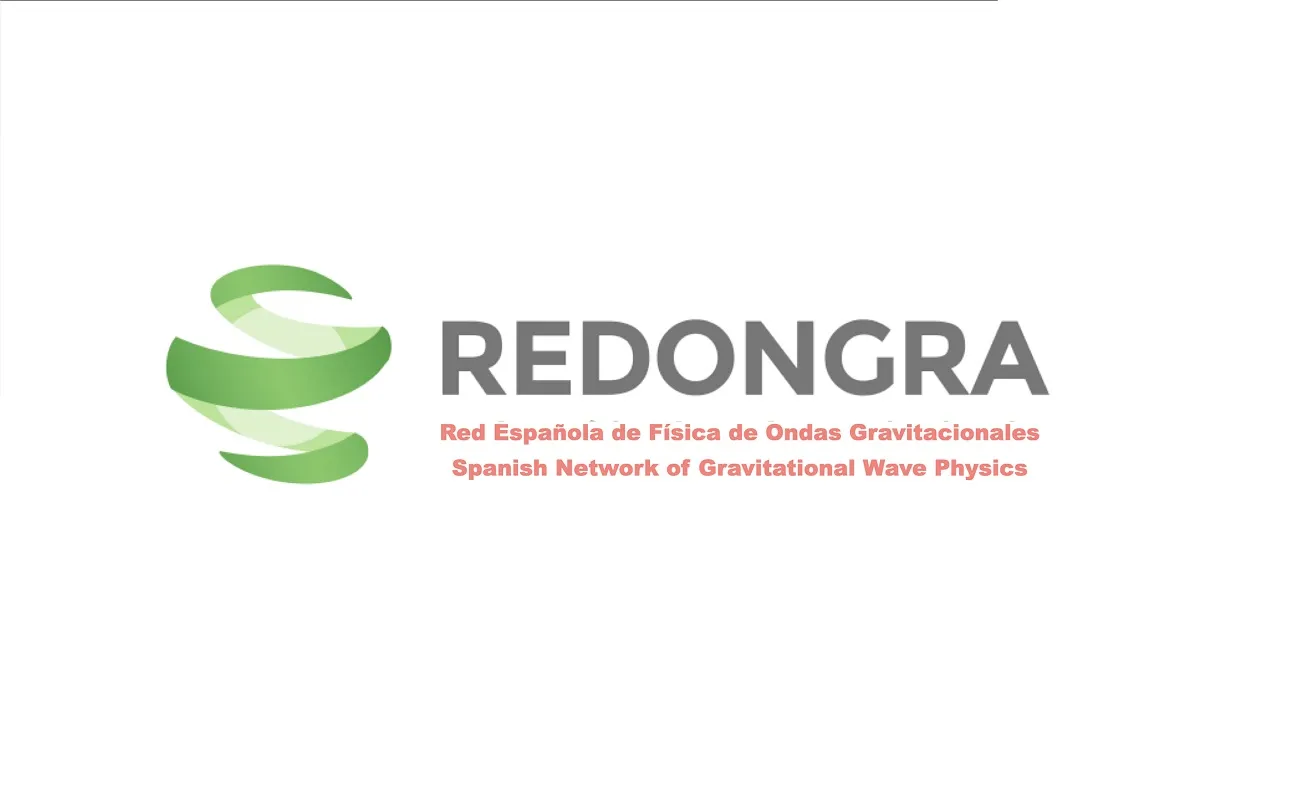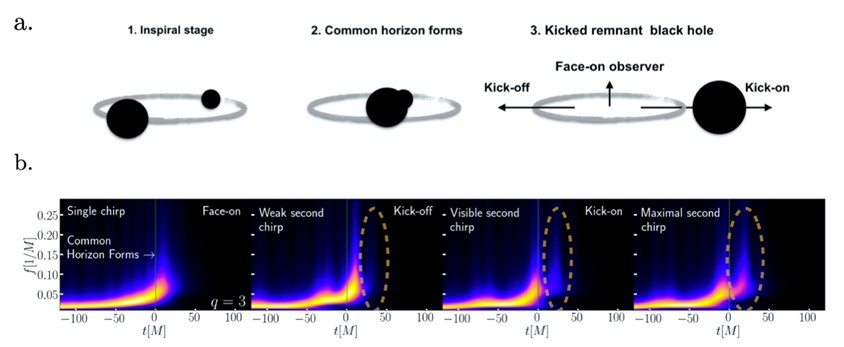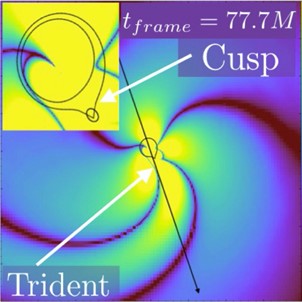O IGFAE únese a REDONGRA, unha rede para impulsar a ciencia de ondas gravitacionais en España



08.10.2020

Un equipo de astrónomos, liderado polo novo investigador de ondas gravitacionais do Instituto Galego de Física de Altas Enerxías (IGFAE) Juan Calderón Bustillo, revela que cando dous buracos negros fusiónanse, o buraco negro remanente emite pulsos de ondas gravitacionais, similares ás dun faro, que permiten pescudar a súa forma. O estudo publícase hoxe en Communications Physics da revista Nature.
Os buracos negros atópanse entre os obxectos máis fascinantes do Universo. Na súa superficie, coñecida como “horizonte de eventos”, a gravidade tórnase tan forte que nin sequera a luz pode escapar á súa atracción. Normalmente, os buracos son criaturas aletargadas e silenciosas que van devorando calquera obxecto que se lles achegue demasiado. Con todo, de cando en vez, estas bestas cósmicas chocan e fusiónanse, dando lugar a un dos eventos máis catastróficos que se poden dar no Cosmos. Durante o devandito proceso, un buraco negro recentemente nado e moi deformado libera inxentes cantidades de enerxía mentres adquire a súa forma final. Este fenómeno, que dura apenas unha fracción de segundo, ofrece unha oportunidade única de observar buracos negros que cambian rapidamente de forma, e permite estudar a gravidade en condicións extremas.
Aínda que as colisións de buracos negros non producen luz, poden ser observadas grazas ás ondas gravitacionais —deformacións do propio tecido espazo-temporal— que orixinan. Durante décadas postulouse que, tras a colisión, o comportamento do buraco negro remanente é clave para estudar a gravidade en detalle, e que este debería estar codificado nas ondas gravitacionales.
Hoxe a revista Communications Physics de Nature publica un traballo liderado por Juan Calderón Bustillo, novo investigador posdoutoral Junior Leader de “la Caixa” – Marie Curie Fellow no IGFAE, en colaboración co Georgia Institute of Technology (Atlanta, EE. UU), que revela como as ondas gravitacionais levan impresas a forma do buraco negro final segundo consigue a súa forma definitiva.
“Simulamos colisións de buracos negros en supercomputadores, e comparamos a forma cambiante do buraco negro final coas ondas gravitacionais que emite”, comenta Christopher Evans, estudante de doutorado no Georgia Institute of Technology e coautor do artigo. “Así descubrimos que estes sinais son moito máis ricas e complexas do que se pensaba e permítennos entender a forma do buraco.”
As ondas gravitacionais emitidas por estas colisións son sinais moi simples, coñecidas como chirps ou “gorjeos”. “A medida que os dous buracos aproxímanse cada vez máis rápido, emiten un sinal cuxa frecuencia e amplitude vai crecendo e que nos informa sobre a velocidade e o tamaño da órbita que describen”, explica Juan Calderón Bustillo. “Tras a colisión, o buraco negro remanente emite un sinal cunha frecuencia ou nota constante que se apaga rapidamente, como sucede ao golpear unha campá”. Este fenómeno repítese en todas as ondas gravitacionais que se observaron ata o de agora, nas cales vimos a colisión “desde arriba”. Con todo, o estudo revelou que algo totalmente distinto sucede se estes sinais obsérvanse desde o plano orbital “ou o ecuador” da colisión.

A: Etapas dunha fusión de buracos negros. Inicialmente, durante a etapa de espiral, ambos os buracos orbitan un en torno ao outro, aproximándose paulatinamente. Despois, ambos os buracos fusiónanse, formando un buraco moi distorsionado. Finalmente, durante a etapa de relaxamento, o novo buraco final consegue a súa forma final. B: Frecuencia dos sinais observadas “desde arriba” da colisión (esquerda) e desde varias posicións no plano orbital (resto) en función do tempo. O primeiro sinal mostra a característica forma de “gorjeo”, na que tanto amplitude como frecuencia increméntanse a medida que pasa o tempo. As outras tres mostra que, tras a colisión (en t=0) a frecuencia baixa e sobe unha vez máis, producindo un segundo gorjeo (rodeado en amarelo).
Sinais complexos segundo a forma do buraco
O equipo atopou que o buraco negro final emite sinais moito máis complexos, cunha nota que se volve grave e aguda varias veces, antes de apagarse. Dito doutro xeito, o buraco “pía” varias veces e non unha, como normalmente espérase. Ditas sinais están relacionadas coa súa forma, que actúa como unha especie de faro de ondas gravitacionais. Cando os buracos que chocan teñen distintos tamaños, o buraco resultante ten inicialmente unha forma como de castaña, cun lado en forma de punta e o outro máis redondeado e uniforme. O achado deste traballo é que o buraco emite sinais máis intensos desde as súas rexións máis curvadas, que son as que rodean a punta. Dado que este buraco tamén rota, a punta e as “costas” van apuntando en todas direccións de modo alternativo, dando lugar aos gorjeos múltiples.

Detalle da forma do buraco negro final (visto desde arriba) e a súa forma de “castaña”. Tres rexións de alta emisión (en amarelo) acumúlanse preto da punta. O buraco rota, apuntando sucesivamente en todas as direccións. Crédito: C. Evans, J.Calderón Bustillo
CREDIT: C. Evans, J. Calderón Bustillo
“Durante moito tempo supúxose que o comportamento dos buracos negros e as ondas que emiten están relacionados. O noso estudo proporciona o primeiro exemplo explícito desta relación”, recalca Pablo Laguna, exdecano da facultade de física do Georgia Institute of Technology e agora profesor na Universidade de Texas (Austin, EE. UU).
“O ano pasado, o Event Horizon Telescope obtivo a primeira imaxe dun buraco negro, coñecido como M87. Non obstante, é un buraco negro que está máis ben en repouso e non experimenta cambios importantes. No futuro, os detectores de ondas gravitacionais poderían permitirnos comprender como se comportan buracos negros recentemente nados, mentres experimentan cambios rápidos e violentos, o cal permitiría poñer a proba a teoría da gravidade de Einstein cun detalle sen precedentes”, conclúe Calderón.
O IGFAE é un centro mixto da Universidade de Santiago (USC) e a Xunta de Galicia, acreditado como Unidade de Excelencia “María de Maeztu” (o único centro de Galicia con esta distinción) e Centro de Singular de Investigación do Sistema Universitario de Galicia.
Referencias:
Calderon Bustillo, J., Evans, C., Clark, J.A. et al. Post-merger chirps from binary black holes as probes of the final black-hole horizon. Commun Phys 3, 176 (2020).
https://doi.org/10.1038/s42005-020-00446-7